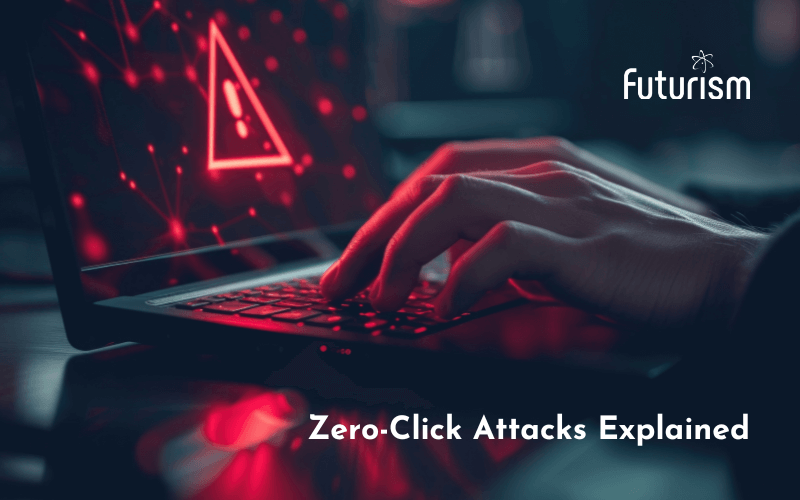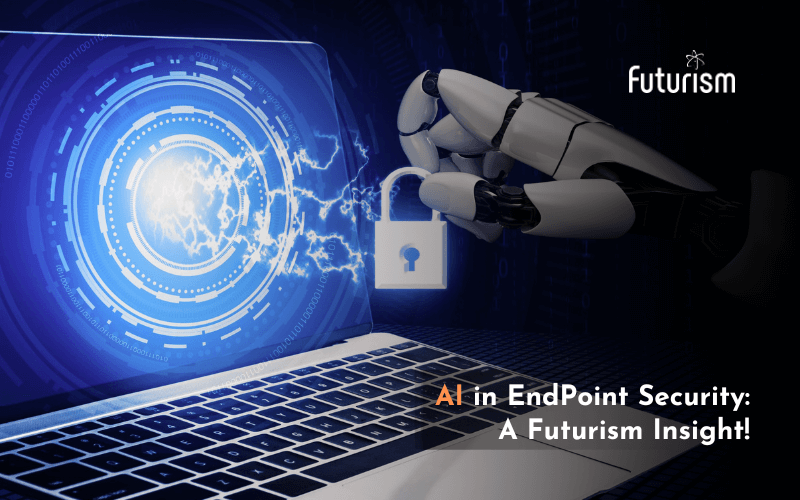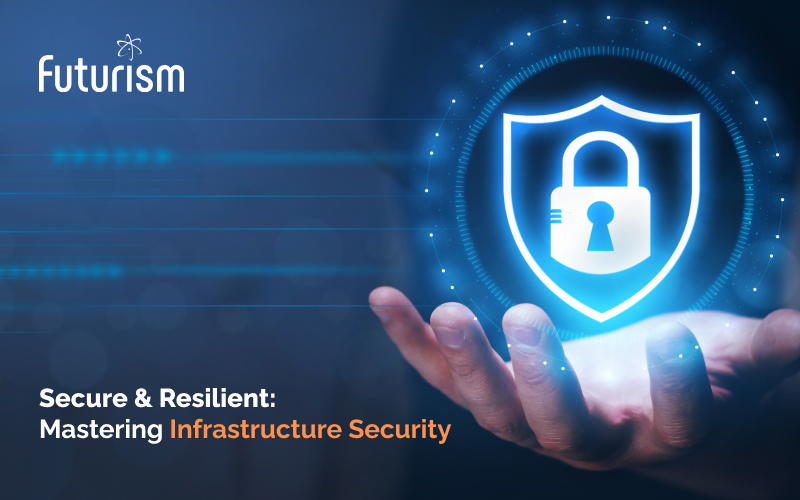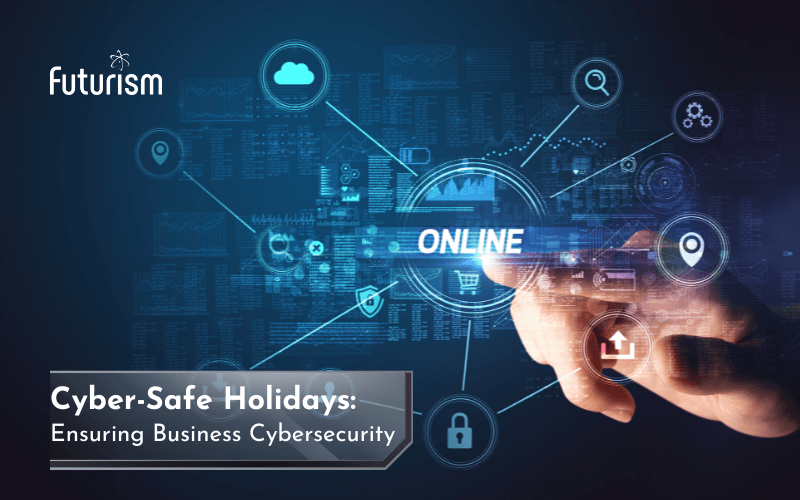Beyond Code: Your Ultimate Guide to AI Cybersecurity

Futurism Technologies
December 15, 2023 - 2.2K
5 Min Read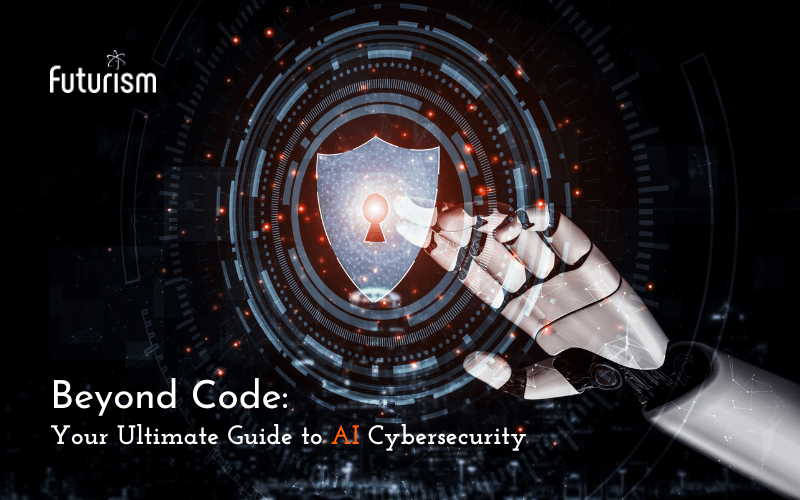
Welcome to the cutting-edge world of AI, where possibilities are as limitless as the stars in the sky! Did you know? The AI market is projected to reach a staggering $190.61 billion by 2025? That’s a gigantic leap from just $21.46 billion in 2018! But as AI technology races ahead at lightning speed, it brings with it a shadow that we can’t ignore – cybersecurity threats.
Imagine this: AI, with its unparalleled efficiency, is like a high-speed train zooming towards a future of innovation. But what if the tracks ahead are laced with vulnerabilities? A single cybersecurity breach could derail this train, leading to not just financial losses but also a significant erosion of brand trust. In fact, reports suggest that by 2025, cybercrime could cost the world a jaw-dropping $17.65 trillion!
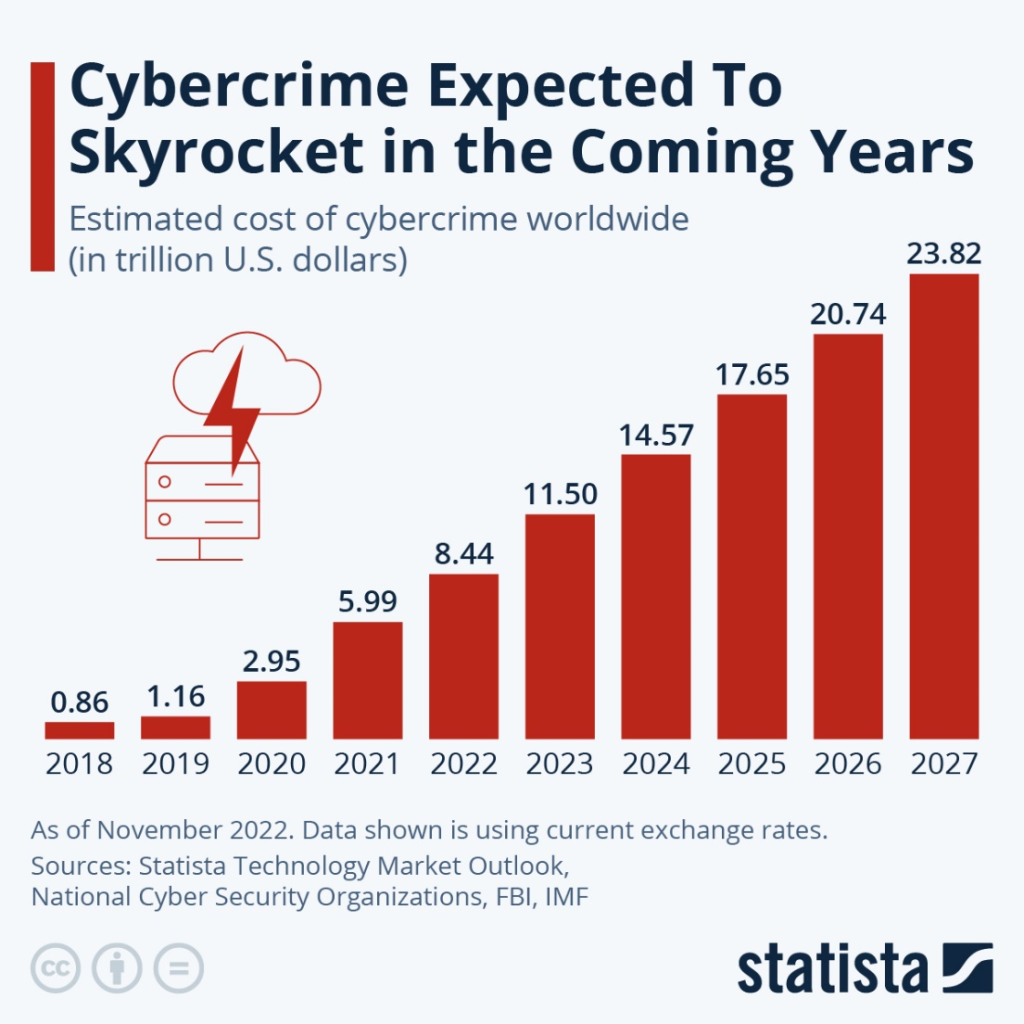
It’s here, in this complex and ever-evolving landscape, that Futurism Technologies steps in. We’re not just talking about setting up a firewall or installing an antivirus. We are talking about pioneering a cybersecurity protocol that is as dynamic and intelligent as AI itself. Our mission? To ensure that the brilliance of AI is matched by an equally robust layer of cyber defenses.
In this blog, we’ll dive deep into the world of AI and cybersecurity. We’ll explore the unique challenges that AI presents, the lifecycle of secure AI development, and the best practices that can keep your AI systems/solutions safe and trustworthy. So, buckle up and join us on this journey into the future, where AI meets cybersecurity, and innovation meets protection.
Read also: Why Your Business Needs an AI Software Development Company?
Understanding the Unique Security Challenges of AI
Understanding the unique security challenges of AI is essential as AI and machine learning (ML) systems differ significantly from traditional IT systems in their security requirements. While both encounter standard cybersecurity threats, AI systems face distinct challenges like adversarial attacks. These attacks involve manipulating AI algorithms, emphasizing the need for advanced and intelligent security measures.
Additionally, securing AI systems and solutions goes beyond conventional cybersecurity approaches. It involves implementing protections against threats that exploit vulnerabilities in algorithms. These attacks can take advantage of weaknesses in AI models, potentially altering outcomes or compromising decision-making processes. Addressing these specific security challenges requires a deep understanding and the deployment of specialized defenses to safeguard AI systems against potential threats.
Read also: AIoT under Siege: Navigating Threats and Vulnerabilities
The Lifecycle of Secure AI Development
Secure AI development is not a one-time event but a continuous process that spans various stages of the AI system lifecycle. Each stage – design, development, deployment, operation, and maintenance – carries its own set of security considerations and potential vulnerabilities.
1. Secure Design: The foundation of a secure AI system is laid here. This phase involves identifying potential threats and vulnerabilities specific to AI systems. It’s about understanding the AI system’s environment and the various ways it could be compromised. This includes considering data privacy, model integrity, and the potential for adversarial attacks. The design phase is not just about planning for security measures but also ensuring the AI system aligns with ethical guidelines and regulatory requirements.
2. Secure Development: This stage is critical for embedding security into the very fabric of the AI system. It encompasses practices like rigorous code review, vulnerability assessment and penetration testing (VAPT), and secure coding standards. Also, it involves ensuring the security of the supply chain – from third party libraries to datasets used for training ML models. Developers need to be vigilant about the security of every component that goes into the system.
3. Secure Deployment: Deploying an AI system introduces new challenges. It’s essential to protect both the infrastructure hosting the AI and the AI models themselves. This includes implementing identity and access management solution equipped with powerful multi-factor authentication mechanisms, robust encryption standards, and secure communication protocols. Moreover, deployment isn’t just a technical challenge but also involves ensuring that the system is used responsibly and in accordance with ethical standards.
4. Secure Operation and Maintenance: The security of an AI system doesn’t end once it is deployed. Continuous monitoring is crucial to detect and respond to threats in real-time. This requires deploying an advanced threat protection solution that continuously monitors for unusual system behavior that might indicate a security breach, as well as keeping the system updated with the latest security patches. Maintenance also involves regularly reviewing and updating the system to adapt to new threats and changing regulatory environments.
Adopting Best Practices and Principles
To effectively secure AI systems, organizations need to adopt a set of best practices and principles. These include:
- Ensuring Transparency and Accountability: AI systems should be transparent in their operations and decision-making processes, allowing stakeholders to understand how decisions are made. This transparency is crucial for accountability, particularly in systems that impact the public or have significant consequences.
- Adopting a ‘Secure by Design’ Philosophy: Security should be an integral part of the AI system’s lifecycle, not an afterthought. This means integrating security considerations into every stage of development, from initial design to deployment and maintenance.
- Taking Responsibility for Security Outcomes: Organizations must take ownership of the security of their AI systems. This responsibility extends beyond the technical team to the highest levels of leadership, ensuring that security is a core value of the organization.
- Building a Robust Organizational Structure for Security: Secure AI development requires the right organizational structure. This involves having dedicated teams for AI security, clear communication channels for reporting security incidents, and ongoing training for staff on the latest security practices.
Read also: WormGPT – The Latest AI-Driven Cyber Threat
Why These Guidelines Are Crucial?
As AI becomes more widespread, it’s super important to focus on keeping it safe. It’s not just about protecting data and computer systems; it’s also about making sure that people can trust the technology itself. Following these rules is really important for companies because they want to make sure their AI systems are strong, reliable, and make users and others feel confident. Having strong security not only protects important information but also makes AI systems more dependable, which helps build trust in them.
Futurism Technologies is a leading AI-native product engineering and digital transformation solutions provider. We specialize in fortifying AI systems against evolving cybersecurity threats. With a dedicated focus on secure AI development, our expertise spans the entire lifecycle of AI systems. We offer tailored digital product engineering solutions, integrating robust security measures from design to deployment and ongoing maintenance. Our product engineering team ensures ethical compliance, regulatory adherence, and proactive adaptation to emerging threats, fostering trust and reliability in the AI solutions and systems that we build here at Futurism.
Takeaway
Developing secure AI systems is a complex but vital endeavor. As AI continues to permeate various sectors, the need for stringent security measures becomes increasingly imperative. By embracing these guidelines, organizations can mitigate risks and harness the full potential of AI, ensuring a safe and prosperous digital future.
Subscribe Now!
TRENDING POSTS
-
Futurism Returns to Hannover Messe 2024: Leading the Charge in Industrial and Digital Transformation
-
The Role of Smart Maritime IoT Solutions in Enhancing Maritime Safety
-
Data Integration Unlocked: From Silos to Strategy for Competitive Success
-
Navigating the Shadows: Understanding Zero-Click Attacks in the Digital Age
-
AI Reimagined: Crafting Next-Gen AI Apps with Expert Fine-Tuning
-
Explore Next-Gen Digital Solutions with Futurism at MWC 2024
-
Futurism Unleashes the Technology of Tomorrow at MWC Barcelona 2024
-
Futurism AI: Turning Ideas into Apps at Lightning-Fast Speed
-
Accelerate AI Across Your Enterprise With Futurism AI
-
Futurism to Address the Biggest Security Challenges at RSS 2022
-
Futurism at SelectUSA 2022: Steering the Next Wave of Businesses
-
Futurism to Uplift the MSP Business Community at the MSP Expo 2022
-
Futurism Sets Out to Address the Biggest Security Challenges at the RSA Conference 2022
-
5 Ways to Prepare Your Business for Digital Transformation
-
4 Ways To Win at Digital Transformation on a Shoestring Budget
-
Futurism: Empowering MSPs at the Channel Partners Conference & Expo 2022
-
Why AI in Digital Marketing is the Next Big Thing?
-
Futurism brings ‘Mobile First Digital Transformation’ to the fore at MWC Barcelona 2022
-
Cybersecurity for Rural Hospitals: How can Rural Hospitals become Cyber Smart?
-
Futurism Empowers Rural Health Care Community at the AHA Rural Health Care Leadership Conference
-
The Biggest Problem With Cybersecurity In Healthcare Sector, And How IBM QRadar Can Fix It?
-
How IBM MaaS360 is Revolutionizing Endpoint Security in the Healthcare Industry?
-
Futurism to Present its MSP Partner Program at the Channel Partners Conference & Expo 2021
-
EndPoint Security in Healthcare Matters and IBM MaaS360 Can Help
-
How AI Will Enable Faster Adaptation of Digital Transformation
-
How Is Digital Modernization Important In Supplier On-Boarding?
-
Top 10 Email Marketing Tips for This Holiday Season
-
Benefits of using ERP Software for Energy and Gas Industries
